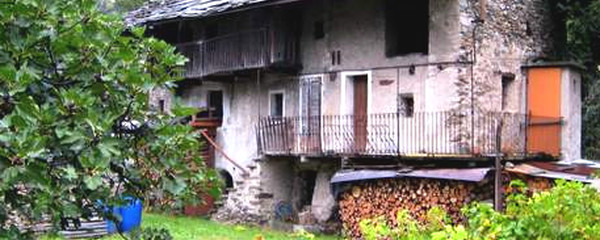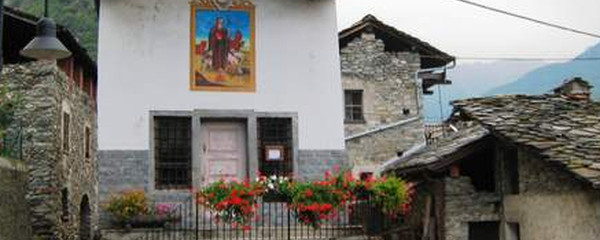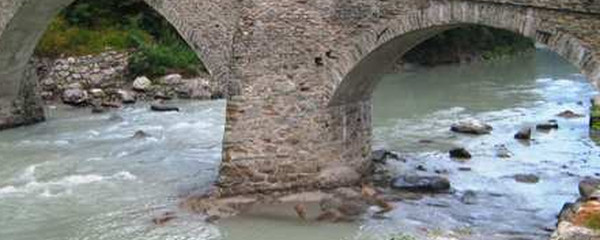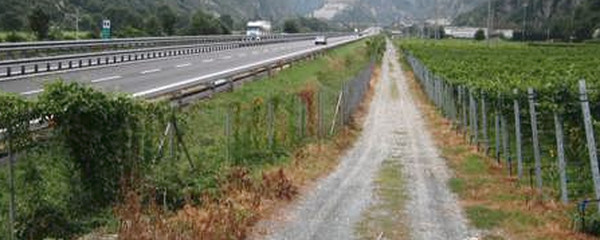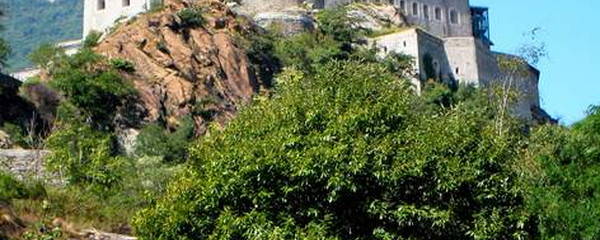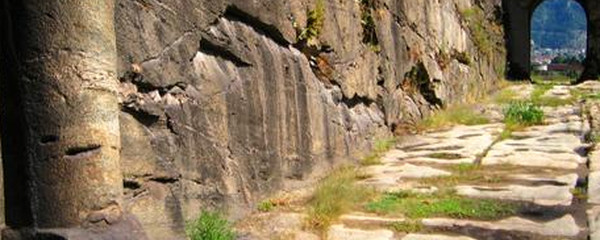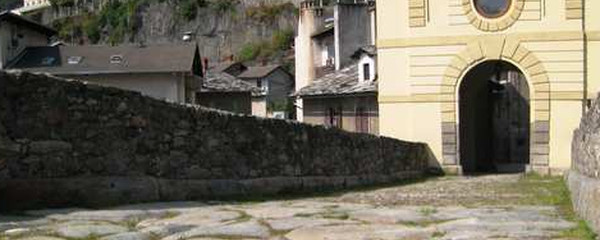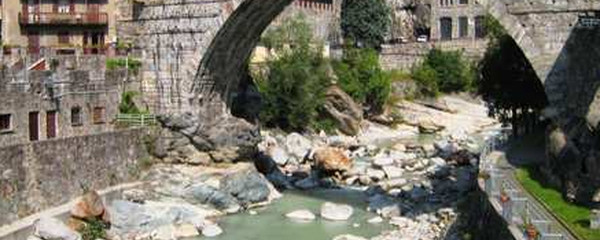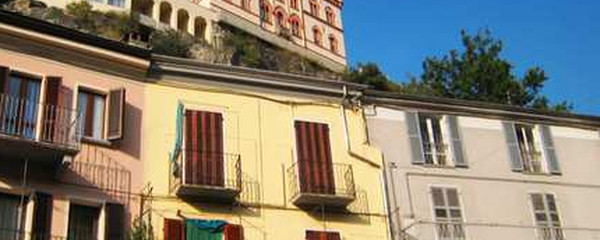Navigation

bei Arnad

malerisches Arnad
Arnad will be the first village we encounter. Its Basilika San Martino is one of the oldest churches in the Aosta valley, build around 1000 a.Chr. The ruins on the hill are witnesses of a castle built by the «Arnad dynasty» in the 12th Century. When leaving Arnad, we will cross the Dora Bàltea on an impressive, old bridge.
On that westside of the river, we will then walk south along the highway, on its westside as well, until we reach Hône. Here, we cross back to the eaastside of the river, reaching the village Bard. Shorly after the village, we reach a narrow pass in the valley, well suited to stop «unwanted visitors». A fortress on the hill, being a museum now, tells about the rich history of this site.

Arnad: Steinbrücke über die Dora Bàltea
We continue on a roman trail, and will enter Donnas under an archway, passing beside a roman milestone. Another construction on this roman trail is the bridge at Pont-Saint-Martin, having contributed to the name of the village. That bridge crosses the river «Lys» which discharges into the Dora Bàltea shortly after.
Note(s)
The «Via Francigena» is one of the 3 main christian pilgrimage trails of the Middle Ages, the main axis leading from Canterbury to Rome. This documentation currently covers the most frequented section from Lausanne to Rome.
Anmerkungen
Die «Via Francigena» ist einer der 3 christlichen Pilgerwege des Mittelalters, dessen Hauptachse von Canterbury in England nach Rom führt. Diese Dokumentation umfasst vorerst den Abschnitt von Pontarlier nach Rom.
Orte entlang des Weges
Verrès - Arnad - Echallod - Hône - Bard - Donnas - Pont-Saint-Martin

